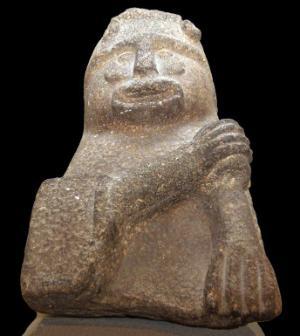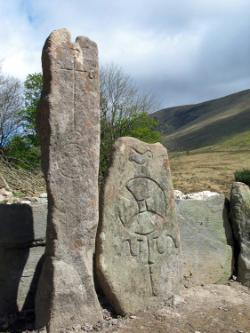- Welcome from the Head of College
- Current Undergraduate Students
- Graduate Studies
- Future Students
- International Students
- Research
- CACSSS Research Areas
- Research Impact
- Catching Stories
- History Declassified
- IMMERSE
- Atlas of the Irish Revolution
- False Memories for Fake News in the Irish Abortion Referendum
- Atlas of the Great Irish Famine 1845-1852
- Hidden Galleries
- Movie Memories
- Between Two Unions: The constitutional future of the islands after Brexit
- Archive
- A Socio-Economic Study of Cork City Northwest Quarter Regeneration (CNWQR)
- Children’s Voices in Housing Estate Regeneration
- Cork Folklore Project
- Deep Maps: West Cork Costal Cultures
- Developing research to deliver high impacts in homelessness service provision by Cork Simon
- Moving On Ireland
- Project DaRT - Discussions and Reflections on Translation
- The Cork Folklore Project’s Memory Map
- The World-Tree Project
- The Augustinian Friars in Late Medieval Ireland
- (Re)Sounding Holy Wells
- Spotlight
- Speaking the Predicament: Empowering Reflection and Dialogue on Ecological Crisis
- Participatory arts for advocacy, activism and transformational justice with young people living in Direct Provision
- Make Film History Wins FIAT/IFTA Archive Achievement Award
- Dr. Marie Kelly (School of Film, Music & Theatre) co-edits : Scene 8 Volumes 1 and 2 (2021) – Special Issue: ‘Performance and Ireland’ (Intellect)
- The significance of humanities scholarship in challenging times
- Dr Sarah Foley, a Lecturer in the School of Applied Psychology, was awarded an NUI Grant for Early Career Academics in 2020
- NUI Awards Grant for #DouglassWeek: 8th-14th February, 2021
- Humanities for the Anthropocene
- Forgotten Lord Mayor: Donal Óg O’Callaghan, 1920-1924
- Architectural Space and the Imagination: Houses in Literature and Art from Classical to Contemporary
- Dr Siobhan O’Sullivan - Agency and ageing in place in rural Ireland
- Launch of new research cluster on 'Life Writing'
- What keeps us going?
- Through the lens of the secret police: Images from the religious underground in Eastern Europe
- Dr. Amanullah De Sondy - The Pocket Facts Guide for Jewish, Christian and Muslim People 2020
- Issue 19 of Alphaville published by The Department of Film and Screen Media
- Digital Edgeworth Network
- Make Film History: Opening up the Archives to Young Filmmakers
- Establishment of monthly online reading group on Abolition and Decarceration
- Dr Anne Marie Devlin (Applied Linguistics) published a special issue on Study abroad and the Erasmus+ programme in Europe
- Dr. Barbara Siller (Department of German), has co-published an edition on literary multilingualism.
- Postgraduate Researchers from MA in Medieval History produce Mapping Cork online exhibition
- Adaptation Considered as a Collaborative Art: Process and Practice, (Eds.: Bernadette Cronin, Rachel MagShamhráin and Nikolai Preuschoff
- (Non)Spectacular Infrastructure: Enacting Resource Circulation in Stages, Studios and Communities
- Dr. Clíona O’Carroll (Department of Folklore) has received an IRC New Foundations grant
- Dr Catherine Forde from the School of Applied Social Studies has been awarded an IRC New Foundations grant
- Elderly (non)migrants’ narratives of home: A comparative study of place-making in Ireland and Slovakia (EMNaH)
- Dr. Ken Ó Donnchú, lecturer in the Department of Modern Irish, has received an IRC New Foundations Award
- Decolonizing Irish Public Heritage
- EMBRACE - Exploring Mobility: Borders Refugees and Challenging Exclusion
- Dr. Marica Cassarino (School of Applied Psychology) awarded Royal Irish Academy and British Academy Knowledge Frontiers Network Funding
- CACSSS Postdoc wins Charlemont Grant
- Childhood, Religion and School Injustice by Karl Kitching
- New Collaboration between UCC, RTÉ and the Department of Culture, Heritage and the Gaeltacht
- Cork Movie Memories - Dan O’Connell and Gwenda Young (Department of Film and Screen Media
- Chronicles of COVID-19/Cuntais COVID-19’ initiative: testimony collection by Cork Folklore Project
- Dr. Rachel MagShamhrain (Head of Department of German) has published a co-edited collection on Adaptation
- Professor Caitríona Ní Dhúill (Department of German) has published a new monograph
- Two School Postdoctoral Fellows Awarded Royal Irish Academy and British Academy Funding
- Funding Success for Dr Joanna Hofer-Robinson
- New Collaboration between UCC, RTÉ and the Department of Culture, Heritage and the Gaeltacht
- CACSSS Postdoc wins Charlemont Grant
- Applied Social Studies team win ESWRA Outstanding Publication Award 2020
- CACSSS postdoc is awarded Maurice J. Bric Medal of Excellence at IRC’s Researcher of the Year Awards 2019.
- Past postdoctoral researchers in the College
- Dr Mastoureh Fathi
- Dr Michalis Poupazis
- Dr Richard Mason
- Dr Martin Wall
- Dr Rebekah Brennan
- Dr Tatiana Vagramenko
- Dr Anca Maria Șincan
- Dr Agnes Hesz
- Dr Gabriela Nicolescu
- Dr Kinga Povedák
- Dr Declan Taggart
- Dr Anne-Julie Lafaye
- Dr Ken Keating
- Dr Laura Maye
- Dr Martina Piperno
- Dr Brandon Yen
- Dr Annie Cummins
- Dr Rebecca Boyd
- Dr Sean Hewitt
- University Staff Recognition Awards
- CACSSS Welcome new MSCA Funded Fellows
- College of Arts, Celtic Studies and Social Sciences opens a research facility on Wandesford Quay
- IMMERSE
- CACSSS Wins Big at UCC 2018 University Staff Recognition Awards
- Upcoming Events
- Event Archive
- CACSSS Research Highlights 2012 - 2020
- Research News Archive
- IRC awards funding to 3 projects in the Dept of Archaeology: DAEICS - Digital Atlas of Early Irish Carved Stones (PI Dr Tomas O’Carragain)
- IRC awards funding to 3 projects in the Dept of Archaeology: NEW PASTURES (PI Dr Katharina Becker)
- CIPHER project shortlisted for Times Higher Ed (THE) Award
- CACSSS Researcher funded through HEA North South Research Programme with UU to explore Critical Epistemologies Across Borders (CEAB)
- Leabhar Nua ar an bhFiannaíocht/New Publication on the Finn Cycle
- Cork and Belfast north south prison-university classroom partnerships secure funding from government’s shared island initiative
- Women of the Borderlands: A Walking Biographical Study of Women’s Everyday Life on the UK/Irish Border funded through the HEA North-South Partnership
- Ultonia - Cultural Dynamics in medieval Ulster and beyond: a shared inheritance
- IRC awards funding to 3 projects in the Dept of Archaeology: IPeAT - Irish Peatland Archaeology Across Time (PI Dr Ben Gearey)
- Dr Edward Molloy, School of English and DH - wins Maurice J. Bric Medal of Excellence in IRC’s Researcher of the Year Awards 2020.
- Professor Claire Connolly (School of English and Digital Humanities) appointed to the Irish Research Council
- Dr Máirín MacCarron FRHistS wins the NUI Irish Historical Research Prize 2021
- ERC Hidden Galleries project publishes The Secret Police and the Religious Underground in Communist and Post-Communist Eastern Europe
- CACSSS researchers to host EPA funded online workshop
- €1.5 million ERC Starter Grant Award for Researcher in Dept of Music, School of Film Music and Theatre
- Three PhD students in Applied Psychology commence projects funded through SFI research centre Lero
- CACSSS Researcher co-authors paper for Science on the ‘ecological’ survival of rare manuscripts and texts
- 2021 Research Awardees recognised
- New Foundations Call 2022 open
- C21 Editions
- University College Cork and the Arts Council have appointed Alan Gilsenan as the 2019/20 Film Artist in Residence.
- School of Applied Psychology hold an open house showcase for People and Technology Research Group
- CACSSS Researcher secures major IRC Laureate award for project GENCHRON to explore gender, chronology and time in the Medieval world
- CACSSS Researcher secures major IRC Laureate award for project Cyber Social
- New York Times reports on CACSSS Researcher Dr Alexander Khalil’s (School of Film, Music & Theatre) collaborative music and neuroscience work
- project MUSLIMWOMENFILM project selected for publication in the ‘Results in Brief’ section of the European Commission’s CORDIS website
- GendeResearchIreland Symposium: Reflections on Institutionalising Gender Equality in Higher Education
- Community Engagement
- Careers & Employability
- Information for Guidance Counsellors
- Information for Staff
- Schools in the College
- People
IRC awards funding to 3 projects in the Dept of Archaeology: DAEICS - Digital Atlas of Early Irish Carved Stones (PI Dr Tomas O’Carragain)
(Photo: Caherlehillan Co Kerry Cross-slabs)
Along with UCC and QUB colleagues, and other collaborators, Tomás Ó Carragáin of the Archaeology Department has been awarded IRC COALESCE funding to produce a Digital Atlas of Early Irish Carved Stones (DAEICS).
The award relates to the INSTAR+ stream of COALESCE, which is funded by the National Monuments Service of the Department of Housing, Local Government and Heritage in partnership with the Heritage Council. The project brings together archaeologists from the private, university, and state sectors, in partnership with community groups, to deliver a step-change in both the academic understanding and public appreciation of carved stone monuments. The project team includes Patrick Gleeson (QUB), Griffin Murray, John Sheehan, Diarmuid Ó Riain, Nick Hogan, Pat Meere (all UCC), Kate Colbert (UG), Gary Dempsey (Digital Heritage Age, ATU) and Aidan Harte (Munster Archaeology).

(Photo: The Tandragee Idol Armagh)
Carved stone monuments are among our most tangible links to the distant past. From the La Tène-decorated examples of the Late Iron Age (AD 1–400), to the cross-slabs and high crosses of the early medieval period (AD 400–1200), people in late prehistoric and early historic Ireland used stone carving to express their values and identities as skilled craftspeople and as members of kin-groups and wider communities. Stones were carved to preserve the memory of revered ancestors and deceased loved ones, to assert ownership of tracts of land, and to serve as focal points for communal rituals and devotions. These monuments have huge potential to enhance our understanding and enjoyment of Ireland’s past and its links to the wider world, for some designs indicate connections across Europe and as far afield as the Middle East. Yet, to date, that potential remains unrealised. Building upon crucial work by the Irish National Monuments Service and the Northern Irish Historic Environment Division, this project will map the surviving examples on the island, allowing scholars and the public alike to explore regional and chronological patterns as never before. In collaboration with local communities, the project team will use the atlas to inform and enable detailed studies of outstanding collections centred on Clonmacnoise, Armagh, and Iveragh. Through training in digital recording techniques, citizen scientists will be empowered to make an enduring contribution to the study of carved stones, thereby promoting the public appreciation and conservation of these important monuments.

